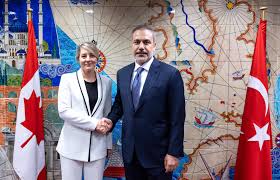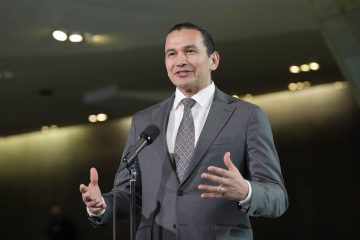Pierre Poilievre: The Rising Star of Canadian Politics

Introduction
Pierre Poilievre has quickly emerged as a prominent figure in Canadian politics, making significant waves as the leader of the Conservative Party of Canada. His leadership comes at a crucial time when Canadians are facing numerous economic challenges, and the political landscape is rapidly evolving. Understanding Poilievre’s approach and policies is essential for voters who are trying to navigate the complexities of the current Canadian political environment.
Background and Rise to Leadership
Born on June 3, 1979, in Calgary, Alberta, Pierre Poilievre began his political career at a young age. He was first elected to the House of Commons in 2004 at the age of 25 as a member of the newly formed Conservative Party. Over the years, Poilievre has held various ministerial roles, including Minister of State for Democratic Reform and Minister of Employment and Social Development. His commitment to right-leaning policies and focus on economic issues appealed to many Conservative supporters.
In September 2022, Poilievre was elected as the leader of the Conservative Party, succeeding Erin O’Toole. His leadership campaign focused on lowering the cost of living, increasing transparency in government, and reducing inflation, connecting with a wide voter base frustrated by rising prices and economic uncertainty.
Current Challenges and Initiatives
Since taking office as party leader, Poilievre has faced multiple challenges, including addressing concerns over the Canadian economy, the ongoing fallout from the COVID-19 pandemic, and fluctuations in public opinion. His strategies include advocating for tax cuts, reducing government spending, and increasing accountability among public officials.
Recently, Poilievre has been vocal about the need for affordable housing, proposing measures aimed at increasing the housing supply and making homeownership more accessible for Canadians. He has also placed a strong emphasis on individual freedoms and reducing bureaucratic red tape, which resonates with many voters seeking practical solutions to everyday problems.
Conclusion
As Pierre Poilievre continues to shape his leadership style and political agenda, he remains an important figure within Canadian politics. His ability to address pressing economic issues and articulate a clear vision for the future will significantly influence both his party’s success and the broader political landscape in Canada. Looking ahead, the effectiveness of his strategies and policies will be closely monitored by voters and political analysts alike, as the Conservative Party prepares for the next federal election. The choices made by voters in the upcoming election will ultimately determine Poilievre’s impact on Canadian politics and the country’s direction for years to come.









